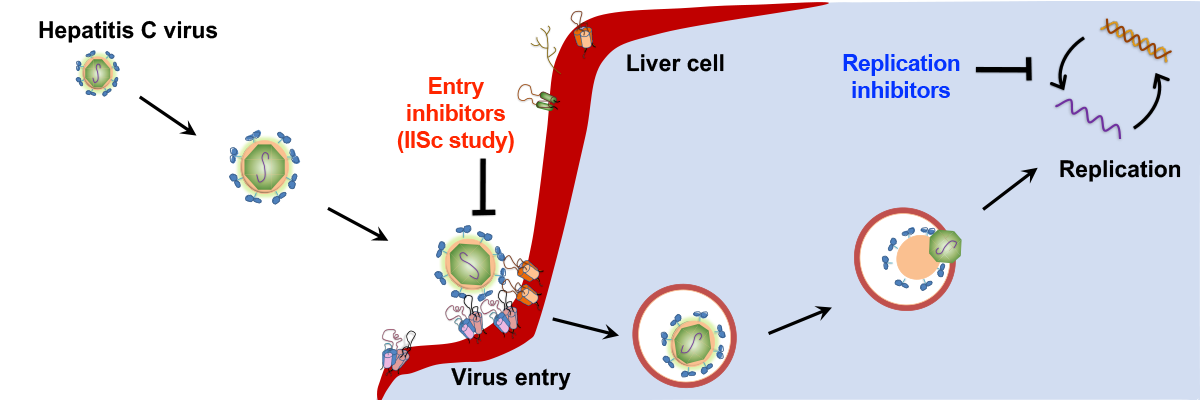Drug combinations for hepatitis C
The hepatitis C virus (HCV) infects about 1% of the population in India. If left untreated, it can severely damage the liver, often leading to liver cancer. Great strides are being made in the treatment of individuals chronically infected by HCV. Several new drugs have now become available that are able to cure patients in 2-3 months. The drugs, however, are costly and can suffer from drug resistance. Massive efforts are ongoing, therefore, to identify optimal combinations of drugs that would maximize response while keeping costs, side effects, and resistance under control. A new class of drugs that is under development and shows particular promise aims to block the entry of the virus into liver cells. The advantage over other classes of drugs, which block the replication of the virus after it has entered cells, is that the cells are left protected from the virus. Also, some of the entry inhibitors target cellular proteins and hence may be less susceptible to drug resistance. Their potency against the virus, however, remained to be ascertained. In a recent study from IISc, entry inhibitors were predicted to have potency comparable to the replication inhibitors. Entry inhibitors thus add a promising ingredient to the armamentarium available for identifying the best hepatitis C treatments.

Figure caption: A schematic of the infection of a liver cell by hepatitis C virus. Drugs can block various steps in this infection process, including viral replication inside cells. Drugs studied at IISc stop the virus at the gates, blocking its entry into cells.
Reference: Padmanabhan P, Dixit NM. Inhibitors of hepatitis C virus entry may be potent ingredients of optimal drug combinations. Proc Natl Acad Sci. 2017; 201704531.doi:10.1073/pnas.1704531114
Lab website: http://chemeng.iisc.ac.in/labone/
Featured in The Hindu: http://www.thehindu.com/sci-tech/health/a-new-combination-of-drugs-for-combating-hepatitis-c/article18590401.ece
Other Featured research




